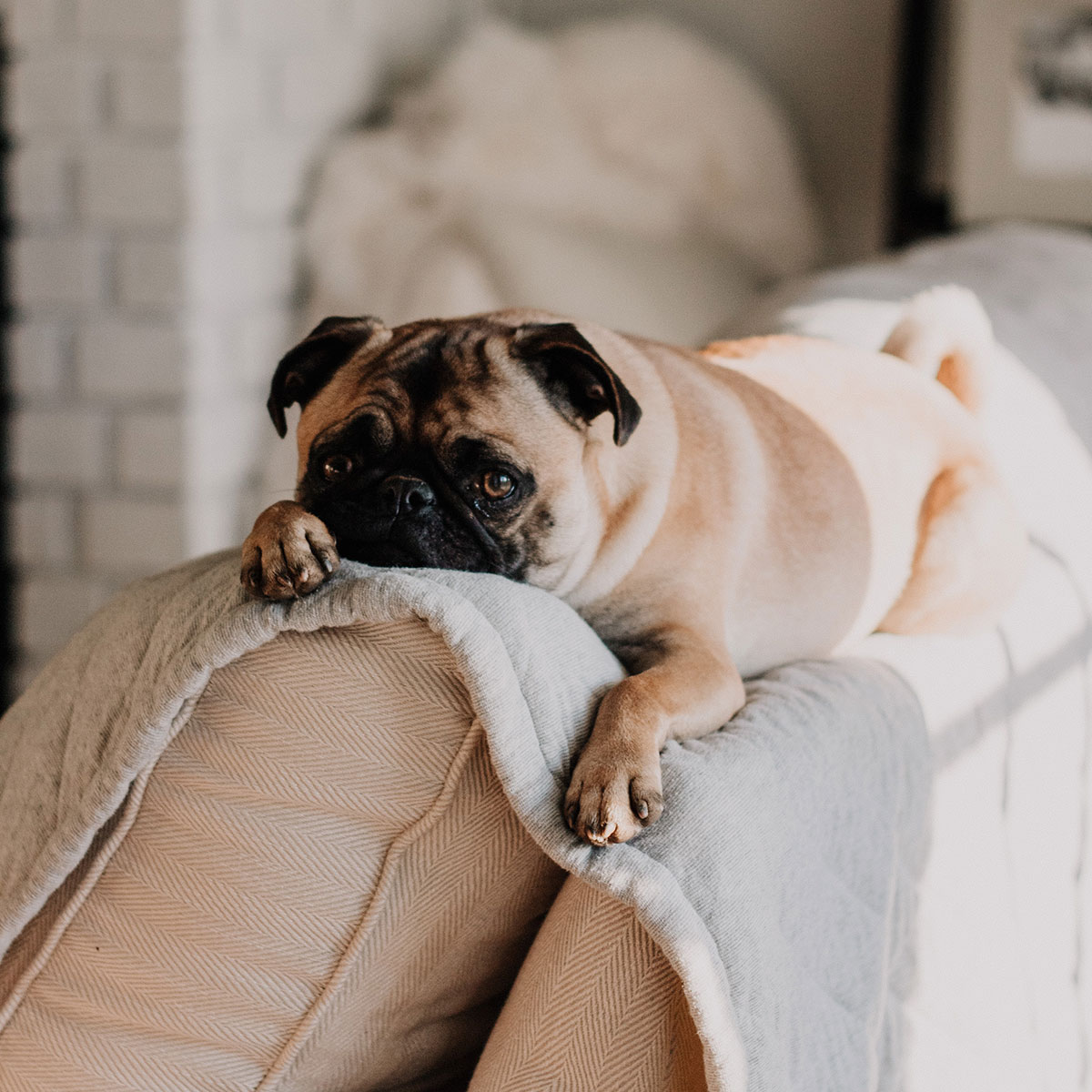Understanding your pet’s emotional needs and creating comfort in unfamiliar places
Travel anxiety in pets is more common than most people realize. While some dogs seem born for adventure, eagerly jumping into cars and adapting to new environments, others find travel deeply stressful. Understanding the psychology behind pet travel anxiety – and knowing how to address it – can transform stressed animals into confident travel companions.
The key isn’t forcing anxious pets to “get over it.” Instead, it’s about creating systems and routines that provide emotional security even when everything else is changing around them.
The Root of Travel Anxiety
Pet travel anxiety stems from the same place as human travel stress: loss of control and disruption of familiar routines. Dogs and cats are creatures of habit who find comfort in predictability. When their environment, schedule, and routines suddenly change, even the most confident pets can experience stress.
Common anxiety triggers during travel:
- Unfamiliar sounds, smells, and environments
- Changes in routine and schedule
- Separation from familiar territory
- Motion sickness and physical discomfort
- Disrupted meal and bathroom schedules
- New people, animals, and situations
Understanding these triggers helps pet parents create travel experiences that minimize stress while building positive associations with new experiences.
The Power of Familiar Routines
One of the most effective ways to reduce travel anxiety is maintaining familiar routines within unfamiliar environments. When pets can rely on consistent meal times, familiar feeding equipment, and predictable patterns, they feel more secure even in new places.
This is why experienced pet travelers swear by bringing familiar items from home. It’s not just about convenience – it’s about providing psychological anchors that help anxious pets feel grounded in changing circumstances.
Routine elements that provide comfort:
- Consistent meal times and feeding rituals
- Familiar sleeping arrangements and bedding
- Regular exercise and bathroom schedules
- Predictable daily structure
- Consistent commands and expectations
Creating Mobile Comfort Zones
Anxious pets benefit enormously from having designated “safe spaces” during travel. These comfort zones should be easily portable and quickly establishable wherever you stop. The goal is creating a bubble of familiarity that travels with you.
Your pet’s comfort zone might include their favorite blanket, a familiar toy, and yes – their own feeding equipment. When pets eat from their own bowls in their own space, it reinforces the message that this new place is safe and they belong here.
The Role of Consistency in Feeding
Feeding time represents much more than nutrition for anxious pets – it’s a powerful psychological anchor. Pets who eat from their familiar bowls, at their regular times, with their usual portion sizes experience less stress overall.
This consistency becomes even more critical during travel when everything else is changing. Smart pet parents recognize that maintaining feeding routines isn’t just about physical health – it’s about emotional well-being too.
Why feeding consistency matters for anxious pets:
- Provides predictable structure in chaos
- Reinforces normal routines and expectations
- Creates positive associations with new environments
- Reduces one source of stress and uncertainty
- Helps maintain appetite during stressful times
Building Positive Travel Associations
The goal isn’t just managing anxiety – it’s gradually building positive associations with travel experiences. This process takes patience and strategic planning, but the results are transformative.
Start with short, positive trips that end with enjoyable experiences. Maybe a drive to a favorite park, a visit to a pet-friendly store, or a trip to see beloved relatives. Gradually increase trip length and complexity as your pet’s confidence grows.
Reading Your Pet’s Stress Signals
Successful anxiety management requires recognizing stress signals before they escalate into panic. Every pet shows stress differently, and attentive pet parents learn to read their individual animal’s warning signs.
Common stress indicators:
- Changes in appetite or eating patterns
- Excessive panting, drooling, or restlessness
- Withdrawal or unusual clinginess
- Digestive upset or accidents
- Excessive vocalization or unusual quietness
- Destructive behavior or repetitive actions
Early intervention when you notice these signs can prevent minor stress from becoming major anxiety episodes.
Environmental Management Strategies
Controlling your pet’s environment during travel helps reduce anxiety triggers. While you can’t control everything, strategic environmental management makes a significant difference for anxious animals.
Environment control techniques:
- Gradual exposure to travel equipment and vehicles
- Creating familiar scent profiles with items from home
- Managing noise levels and sudden sounds
- Controlling interactions with strangers and other animals
- Establishing consistent sleeping and resting areas
The Science of Comfort Items
Research shows that familiar scents and objects genuinely reduce stress hormones in anxious animals. This isn’t just anecdotal – it’s measurable, biological stress reduction. Comfort items work because they trigger positive memories and associations that counteract anxiety responses.
The most effective comfort items are those associated with positive, low-stress experiences at home. This might be a favorite blanket, a well-loved toy, or yes – their own feeding bowls that carry the scent and familiarity of home.
Medication vs. Management
While some severely anxious pets benefit from anti-anxiety medication during travel, most pets respond well to environmental and routine management. The goal is helping pets develop coping skills and positive associations rather than simply sedating their anxiety.
Work with your veterinarian to develop a comprehensive anxiety management plan that might include behavior modification, environmental changes, and if necessary, medication support.
Success Stories: Transforming Anxious Travelers
Many pets who start as anxious travelers can become confident adventurers with patience and proper management. The key is respecting their emotional needs while gradually expanding their comfort zones.
One pet parent shared how her rescue dog, initially terrified of car travel, gradually became excited about trips when she realized that travel meant adventure and fun – not abandonment or stress. The transformation happened through consistent routines, familiar items, and patient, positive experiences.
Long-Term Confidence Building
The ultimate goal is building genuine confidence rather than just managing anxiety. Confident pets enjoy travel because they trust their humans to keep them safe and maintain their well-being regardless of location.
This confidence builds through positive experiences, consistent care, and the security of knowing that their basic needs – including familiar feeding routines – will be met wherever the journey leads.
When Professional Help is Needed
Some pets have anxiety levels that require professional intervention. Don’t hesitate to consult with veterinary behaviorists or certified pet trainers if your pet’s travel anxiety is severe or isn’t improving with management strategies.
Professional help is especially important if anxiety interferes with your pet’s quality of life or prevents you from providing necessary veterinary care or emergency evacuation if needed.
The Reward of Patient Progress
Helping an anxious pet become a confident traveler is one of the most rewarding experiences for pet parents. Watching a previously stressed animal relax and begin enjoying new experiences creates a deeper bond and opens up new possibilities for shared adventures.
The process requires patience, consistency, and understanding of your pet’s individual needs. But the reward – a confident, happy travel companion who trusts you completely – makes every effort worthwhile.
At Pet People Care™, we understand that successful pet travel isn’t just about logistics – it’s about emotional well-being. When pets feel secure and cared for, they’re free to enjoy the adventures that strengthen the bond between human and animal companions.
Ready to help your anxious pet become a confident traveler? Discover how Pet People Care Travel Bowls provide the familiar routines and consistency that help pets feel secure wherever your adventures take you.


